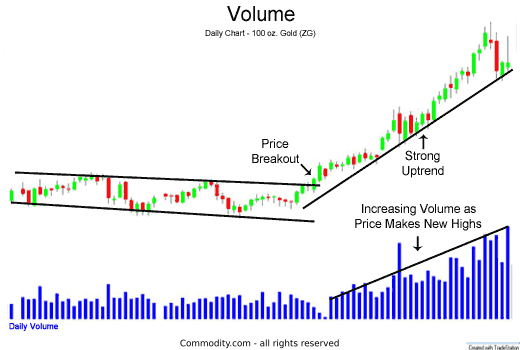As a savvy trader, how to measure crypto exchange liquidity is key to your success. You need to know if your trades will go through without a hitch. It sounds complex, but it’s easier than you think. You’ll discover the simple yet powerful ways to check if an exchange can handle your trade volume without breaking a sweat. It’s about being smart and making your moves count. Let’s dive in and equip you with the tools for trading with confidence.
Understanding the Basics of Exchange Liquidity
The Importance of Liquidity Analysis in Cryptocurrency Markets
Liquidity is key in crypto. It makes trading fast and at fair prices. Good liquidity means more trades can happen without big price changes. Poor liquidity leads to price swings and slow trades. So, we check how liquid a market is before we trade.
Key Crypto Liquidity Metrics to Know
When we talk about liquidity, we mean how easy it is to buy or sell crypto without affecting its price. Let’s dig into some must-know metrics.
Trading Volume: This shows how much crypto is traded in a time frame. More trading often means more liquidity. But, high volume doesn’t always mean high liquidity. Why? Because some trades could be fake to trick us. So, we look deeper.
Bid-Ask Spread: This is the gap between the lowest price sellers will take (ask) and the highest price buyers will pay (bid). A small gap suggests high liquidity. Big gaps tell us the opposite.
Order Book Depth: This is like a list. It shows how many buy and sell orders are there at different prices. Deep books mean lots of orders close to the market price. This signals good liquidity.
Slippage: Ever paid more than expected for your crypto? That’s slippage. It happens when there’s not enough liquidity. Low slippage is good; high slippage is bad for traders.
Volume to Order Book Ratio: This ratio compares trade volume with order book depth. A high ratio hints at strong liquidity. A low ratio could warn of potential price moves.
Now, let’s talk about something called “liquidity pools.” These are big pools of money on exchanges. Traders use them to buy and sell without having a partner ready to take the other side of their trade.
There are lots of ways to measure liquidity. But the most helpful method depends on what you need.
One way is using liquidity data sources for crypto. These tools give us scores or rankings to compare different exchanges. That helps us choose the best place to trade.
Market makers play a big role too. They are like helpers, always ready to buy or sell. Their job is to help the market flow smoothly. They use something called APIs to get data and make smart trades.
But remember, even with all these tools, there’s risk. One risk we watch out for is “impermanent loss.” This happens when prices change after we add our money to a liquidity pool. So, we always think about this risk when we trade with these pools.
Choosing a good exchange is critical. We pick ones with strong liquidity so we can trade nicely and don’t face big losses. We also look at trading pairs. We want many options so we have freedom to trade how we like.
Got all that? These basics help us make smart trades in crypto markets. Next, we’ll learn about tools and techniques to measure that all-important liquidity!
Diving Deeper: Tools and Techniques for Measuring Liquidity
Evaluating Market Depth and Order Book Dynamics
Let’s talk about diving into the deep end. You might wonder, why does market depth matter? Simple. It shows how many buy and sell orders exist at different price levels. An order book crammed full means high liquidity. That makes trading quick and prices stable. Think of it as a lineup at your favorite food truck. A long line means it’s popular and you might wait longer, but it usually means good eats are coming. That’s high liquidity in action.
Bid-ask spread is another key sign. It’s the gap between the lowest sell order and the highest buy order price. A small spread signals strong liquidity. Imagine you’re selling lemonade. If neighbors are willing to pay nearly your asking price, you know you’ve got a hit! That’s a small spread. But if they want to pay dimes on the dollar, you’ve got a wide spread and a problem.
Now, slippage is tricky but important. It’s the gap between the price you want and what you actually get. Less slippage means the market is ready to handle your order size easily – like a big pool you can dive into without making a wave.
Analyzing Asset Pair Liquidity and Trading Volume Assessment
Moving on to trading pairs. They’re like dance partners in crypto. When they move well together, things are smooth. Liquidity in trading pairs means you can swap without missing a beat. For heavy-hitter coins like Bitcoin, you’ll find solid dance partners easily. But for the new kids on the block, it’s a bit of a gamble.
Trading volume is the total of all trades made. A high trading volume is like a busy playground – lots of action, lots of friends to play with. In crypto, this tells you how much trading goes on and can point to high liquidity.
Ever heard of the volume to order book ratio? It gives you the scoop on how volume stacks up against the orders waiting. A high ratio hints that things are looking good and you can jump in or out fast.
Always keep an eye on the liquidity provider. They are the ones making sure there’s enough in the pool for everyone. It’s like having a lifeguard on pool duty. And never forget to measure liquidity risk. It’s about knowing if there’s enough water in the pool before you dive in.
Finally, tools are your best friends. Liquidity measurement tools for crypto assets come in all shapes and sizes. They help you see underneath the surface. And always check exchange liquidity ranking. It’s like a leaderboard for who’s who in the pool of liquidity. With the right tools, you can spot the best exchanges to trade on.
Remember, a liquidity-friendly exchange is like a great swimming pool: easy to get in and out of, and just the right temperature. Happy diving and stay liquidity-smart!
The Role of Automated Market Makers (AMMs) in Crypto Exchange Liquidity
Understanding Crypto Liquidity Pools and AMMs
What are AMMs and how do they work? AMMs are like robots that help traders. They let people buy and sell cryptocurrencies anytime without waiting for someone else to match their trade. AMMs use something called liquidity pools. These are big pots of money made up of different tokens. People add their own tokens to these pools and in return, they get a little reward every time someone makes a trade.
Think of a big swimming pool with different toys floating in it. Each toy is a different kind of token. AMMs make sure the pool is full enough so everyone can play without any trouble. When there are plenty of toys, kids can take and leave toys without emptying the pool. In the world of crypto, this means traders can buy and sell without causing big price changes.
Liquidity pools are places where you can jump in with your tokens. You become a liquidity provider (LP). As a reward, you earn fees from the trades happening in the pool. But you must understand the risks too. The value of the tokens can change. When this happens, you might end up with less than you put in, which people call impermanent loss.
The Impact of Liquidity Mining on Exchange Stability
What does liquidity mining mean for exchange stability? Liquidity mining is like a game where you earn more tokens just for letting people use yours. When more people play the game, it means there’s more money in the pools. More money in the pools makes the exchange stable. It’s like adding more water to the kiddie pool so it doesn’t run dry when more kids come to play.
But if everyone tries to leave the game at once, it could cause problems—like when too many kids jump out of the pool at the same time, and it splashes out all the water. So, exchanges need to make sure there’s always enough in the pool. They give extra rewards to keep people adding to it.
When you hear about high liquidity in crypto, think of a large pool with lots of toys. More toys mean it’s easier to play. With more traders and money in the pool, you can trade big amounts without moving the price too much. Low liquidity is like a small pool that gets empty quick. Trades can cause big splashes in prices, making them very up and down.
Understanding how AMMs work helps you see why some exchanges are better to trade on. These exchanges use AMMs to keep their pools full. They make trading quick and easy. Remember, knowing how to swim in these pools will help you make the best splashes in the world of crypto!
Managing Liquidity Risks and Making Informed Decisions
Indicators of High Liquidity and Its Effects on Crypto Traders
High liquidity in crypto means sales and buys happen fast. This is good for traders. It means there’s always someone to trade with. A tight bid-ask spread is a sign of high liquidity. A small bid-ask spread shows a healthy market. It also means you pay less to get in or out of a trade.
Another sign is a thick order book depth. It has lots of buy and sell orders close to the market price. This shows that many people are ready to trade. A full order book means little price change with each trade. This is what traders want.
Volume to order book ratio is key too. High ratio? It means high trade activity compared to what people want to trade. A high volume to order book ratio suggests active trading. It can also show stability.
What does this mean for you as a trader? You can trade quickly without much price change. You can get in and out fast. This is what you want. So look for exchanges with thin bid-ask spreads and thick order books.
Strategies for Choosing Liquidity-Friendly Crypto Exchanges and Avoiding Impermanent Loss
Let’s talk about impermanent loss next. It happens when you provide liquidity and the price changes. If prices move a lot, you might lose money. Not what we want. To avoid it, pick exchanges with lots of liquidity.
First, check the exchange liquidity ranking. It shows which exchanges have the most cash flow. It uses crypto liquidity metrics. These are numbers that show how easy it is to trade without price changes.
Use liquidity measurement tools too. They show real-time data about asset pairs. They let you track changes as they happen. This means no surprises.
Also, learn about Automated Market Makers (AMMs). They help keep trading smooth by making sure there’s always a buy and a sell price. AMMs use crypto liquidity pools. These pools are like big pots of money that traders can use. They help stop big price swings.
Last, always look at liquidity mining. Some exchanges give you rewards for providing liquidity. But be careful. It can affect prices and lead to impermanent loss.
So, remember. You want an exchange that has low bid-ask spreads. And one with a lot of orders in the book. Use tools to keep track of liquidity. And watch out for rewards that look too good. They might change prices and hurt your profits.
Choosing the right exchange is all about knowing the signs of good liquidity. And protecting yourself from loss. Look at the numbers, use the tools, and trade smart.
We’ve covered a lot about exchange liquidity today. From understanding the basics to diving into the metrics, we know why it matters. Tools and techniques can show us how deep the market goes. We also looked at liquidity pools and the role of automated market makers. Plus, we shared tips to manage risks and make smart choices in your trading. Always aim for exchanges that support strong liquidity to avoid loss. Remember, good liquidity means smoother trades and better prices. Keep these insights in mind, and you’ll make more informed decisions in the crypto world. Stay sharp and trade smart!
Q&A :
What is Cryptocurrency Exchange Liquidity?
Cryptocurrency exchange liquidity refers to the ease and speed at which assets can be bought or sold on a particular crypto exchange platform without causing a significant change in the asset’s price. High liquidity in an exchange means that transactions can be executed quickly and at a stable price, whereas a lack of liquidity can lead to delays and price volatility.
How Can You Measure the Liquidity of a Crypto Exchange?
Measuring the liquidity of a crypto exchange involves looking at several indicators. The most crucial factors include the trading volume of the exchange, the bid-ask spread which reflects the difference between the highest price a buyer is willing to pay and the lowest price a seller is willing to accept, and the depth of the order book which shows how many buy and sell orders are available at different price levels.
What is a Bid-Ask Spread, and Why is it Important for Liquidity?
The bid-ask spread is a key indicator of market liquidity. A narrow spread typically indicates that the exchange has high liquidity because it suggests there is a large number of buyers and sellers actively trading. Conversely, a wide bid-ask spread indicates lower liquidity as there are fewer participants ready to buy or sell at prices close to each other, potentially leading to delays and bigger price impacts when executing trades.
Why is High Liquidity Important for Crypto Exchanges?
High liquidity is essential for crypto exchanges as it ensures more stable prices and allows traders to execute orders quickly at desired price points. It lowers the risk of slippage, which is the difference between the expected price and the price at which the trade is actually executed. This stability attracts more traders, usually leading to even higher liquidity and better market efficiency.
Can the Time of Day Affect Liquidity on Crypto Exchanges?
Yes, the time of day can significantly affect liquidity on crypto exchanges. Since cryptocurrencies can be traded 24/7, trading volumes and liquidity can fluctuate at different times due to factors such as market hours in different time zones and the activity patterns of institutional and retail traders. Typically, liquidity tends to be higher during the overlap of business hours across major financial hubs.






